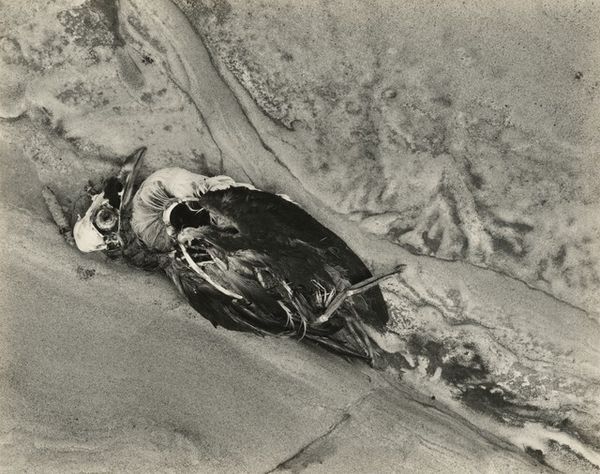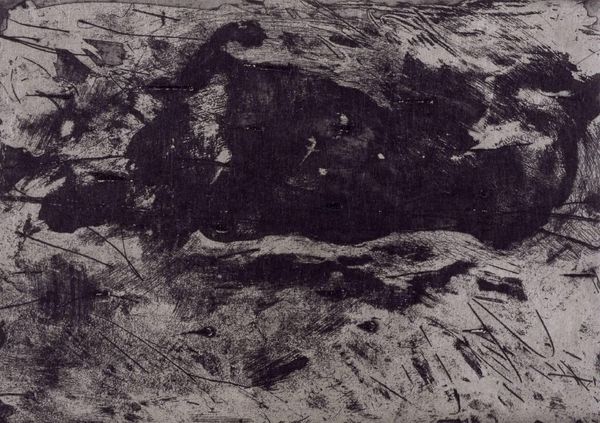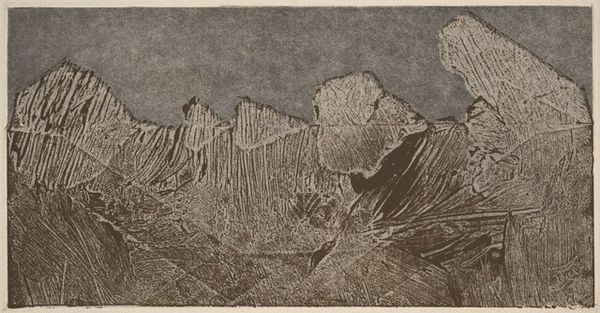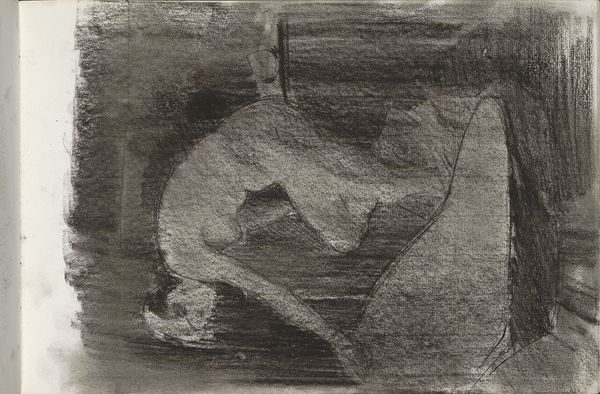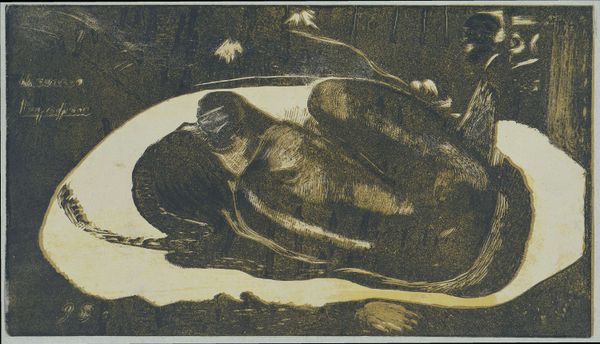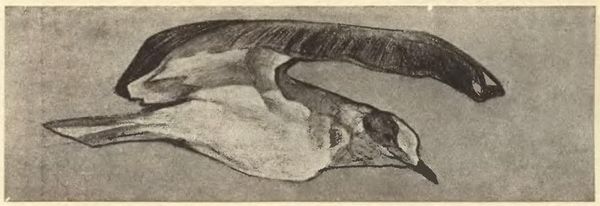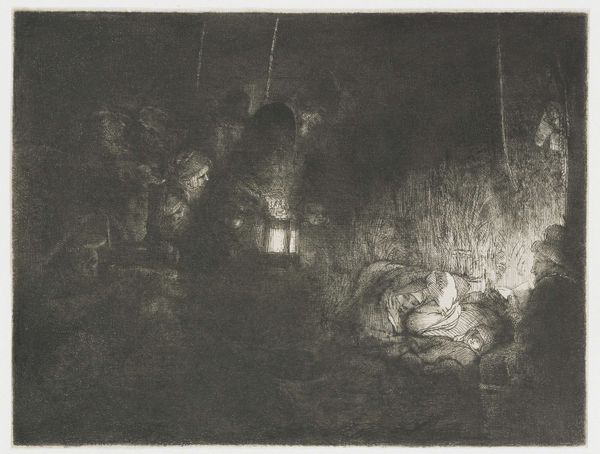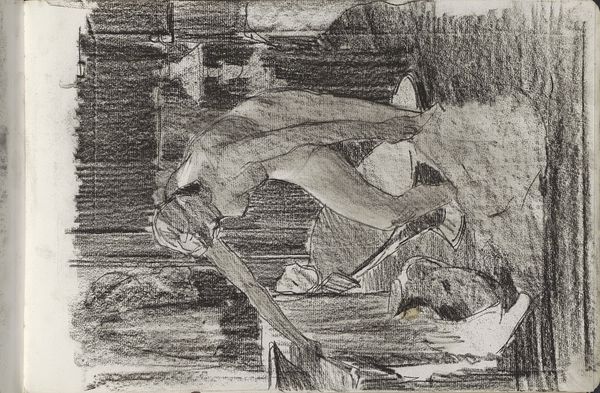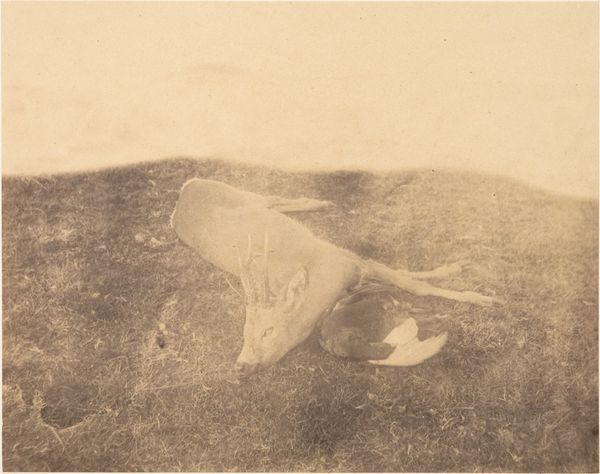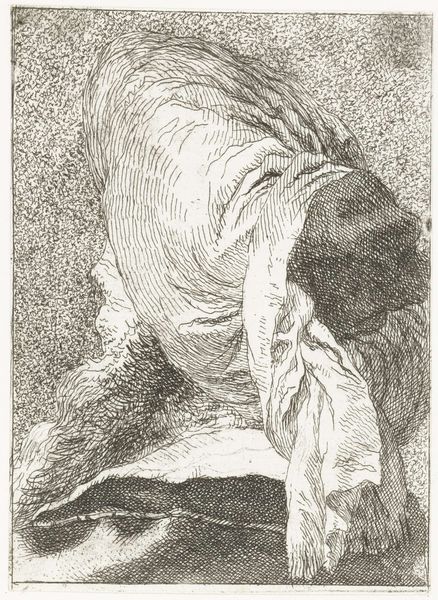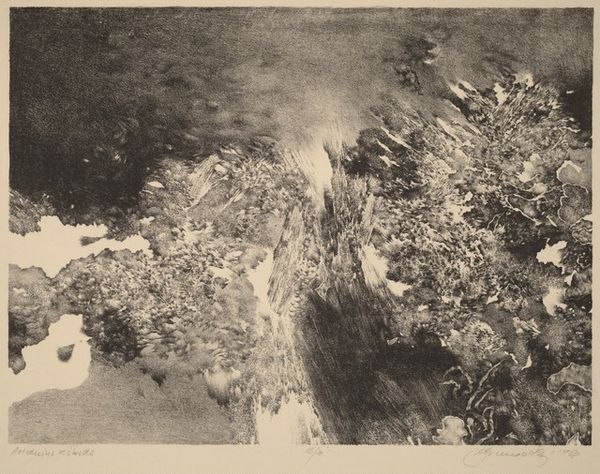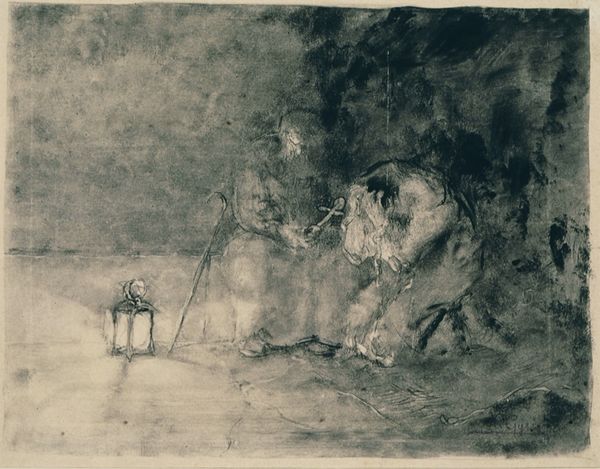
drawing, print, intaglio
#
portrait
#
drawing
# print
#
intaglio
#
figuration
#
momento-mori
#
history-painting
#
realism
Copyright: Public Domain: Artvee
Curator: Mariano Fortuny Marsal created this intaglio print, titled "Dead Kabyle," in 1867. It’s a somber piece, wouldn't you agree? Editor: Yes, incredibly somber. The stark contrast between light and shadow, combined with the subject matter, evokes a powerful sense of loss and stillness. There's something about the figure being shrouded, yet vulnerable, that really stays with you. Curator: Fortuny made this print during a period of significant colonial expansion by European powers into North Africa. Understanding this context, the image gains a complex historical and political weight. Editor: Exactly! How does it reflect the era's perception and representation of colonized peoples? I'm immediately questioning the power dynamics inherent in a European artist depicting the death of a Kabyle man. Was it meant to be an objective study, or something else entirely? Curator: That is very perceptive. We need to analyze the motivations behind the piece's creation. This falls into a complex tradition of Orientalist art. "Dead Kabyle" reveals both artistic skill and potentially problematic ideological underpinnings linked to power, colonialism, and representation. Editor: The intimacy of the scene is striking, yet there’s distance. Notice how his face is concealed? It depersonalizes him in a way. That candlestick and plate seem out of place. It reduces him to an object, part of a still life, devoid of individuality. We must interrogate this depiction! What narrative does Fortuny create, and for whom? Curator: It’s interesting how the realism clashes with that romanticizing effect. His visible bare feet add another dimension, rendering the figure both relatable and utterly foreign. Perhaps it attempts to bridge a gap, even unsuccessfully, or even dangerously so. Editor: Definitely. There is no single interpretation; instead, it's a piece that prompts deep reflection about how death and cultural identity are visualized within a context of inequality. Curator: By considering this artwork through both historical context and a critical contemporary lens, we can encourage visitors to engage actively with issues of representation and cultural power dynamics. Editor: I’d agree completely. "Dead Kabyle" remains a potent and provocative image, encouraging important dialogues on history, representation, and the continuing legacies of colonialism.
Comments
No comments
Be the first to comment and join the conversation on the ultimate creative platform.
